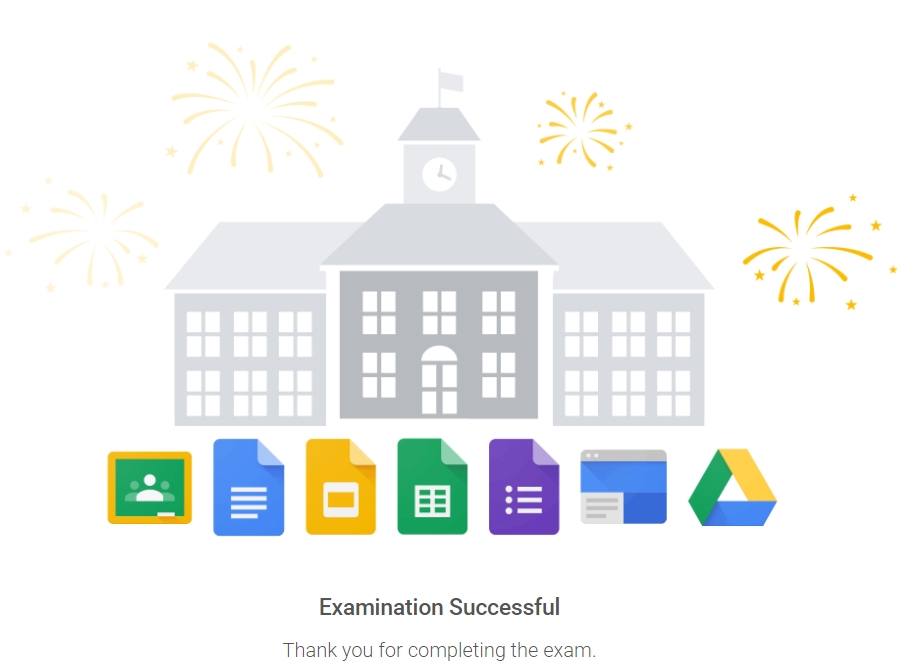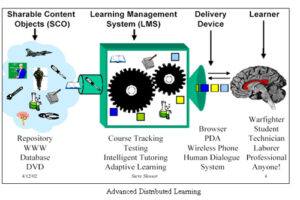“Wow, you have so many digital badges,” a colleague remarked a few years ago. This came after another colleague challenged me. “You know a lot. Why don’t you earn a badge to show others?” At the time, I laughed badging off. “Why waste time earning a badge,” I thought, “when I already know what I need to know for the job I’m doing?”
Then I achieved enlightenment. Digital badging and micro-credentialing weren’t for me. They were for all the other people who wanted to see if I had deep knowledge of what I showed I did. For a time, I decided to earn various certifications. Festooned with digital badges and certificates, I stopped getting questions. Instead, admiration and kudos resulted. But to what end?
Now, I’m facing re-certification opportunities for Google Educator Level 1. How many times in a row do I need to pass a test to show I know my stuff? Does any of it matter? I’m not sure. To explore my faulty thinking, I’m writing this blog entry on the myths of micro-credentialing.

Successfully recertified on 4/23/2019
Kicking the Ant Hill
Who kicked my ant hill on this topic? Google. What I am wondering, is why Google keeps sending me emails to re-certify for Google Educator Level 1. I get it, I get it. Google Educator Level 1 is great for the first-time educator. But after the first time, why do I need to re-certify? Have Google tools changed all that much at Level 1?
It starts easy enough. You get this email from Google:
This is a reminder that your Certified Educator – Level 1 certification expires on May 19, 2019. To maintain your active certification standing and your certificate number, you must recertify before your certification expires on May 19, 2019.
When I see this email now, I’m not excited about earning a coveted certification. I’m disappointed that Google wants to keep making money off of me. Ten dollars for an exam isn’t much, some say. The problem is that over a few years, the costs add up. And what do I get out of it? What’s in it for me?
Micro-Credentialing Myths
If you’re not familiar with micro-credentialing, then think back to Cub Scouts or Girl Scouts. You learn a skill, you get a badge. Lots of badges can add up to many rich, hands-on or academic learning experiences. School districts and organizations have launched digital badging systems. When a teacher earns a “micro-credential,” their supervisor beats a drum and celebrates. But the questions remains: Are they worth it?
The hope was that micro-credentials would change professional development into professional learning. Instead of eye-closing, will-sapping, sit-and-get training, teachers would take on active learning. Somehow, completing a web-based mini-course would make things more exciting and engaging. Unfortunately, that doesn’t seem to have happened. Here are some possible reasons why.
Myth #1: Digital Badges Make It Happen
The myth is: “Teachers will get excited about earning a digital badge in bite-sized modules.” The truth is less so. Earning digital badges don’t result in pay increases or tangible performance boosts. How have you tied a student performance boost to a specific digital badge a teacher earned? You haven’t. Digital badges don’t make it happen. They get in the way of what is happening.

Myth #2: Micro-Credentials Empower Teachers
“Teachers are lifelong learners, their brains are always on. Micro-credentialing makes tracking new learning possible.” The idea here is simple. You create a new digital badge or micro-credential for new areas of interest. Heard about Google Sheets translations? Make a digital badge for that, then teachers can go learn it on their own. And there’s the rub.
What teacher is going to spend some time on their own to learn something that might be useful in class? The answer is not enough to make a difference for student achievement. The learning-knowing-doing gap rears its ugly head in this situation. What gets in the way of translating learning into doing in schools?
One short word: Distrust. If administrators don’t trust teachers to learn new things on their own, there is fear. The fear for the former is that people will game the system. For teachers, micro-credentials may result in superficial learning and thus weak implementation. What teacher will experiment on a new method or activity without admin support?
Myth #3: Personalized Learning Is Effective
Micro-credentials deepen inequity for students. Teachers get a collection of inconsistent skills and strategies depending on their interest. Rather than learn what they need to be effective, teachers learn what they want. When micro-credentialing activities work, they result in patchwork learning. Districts that set up their own micro-credentialing programs lack quality curriculum. Instead, they rely on blog entries and how-to videos with low to no quality standards online. Without the right content to learn from, micro-credentialing is a fad.
Rather than learn what they need to be effective, teachers learn what they want.
Research from the Rand Corporation (2015) highlights personalized learning weaknesses. The study questions the value of self-guided study. It does this by pointing out inconsistent results and lack of access and time. High-quality materials are also missing, as is national standards alignment. A high mobility rate for teachers in urban districts has deleterious effects, too. Students get less than consistent experience. Micro-credentialing efforts for teachers extend students’ failed experiences to educators.
Myth #4: Micro-Credentialing Replaces Traditional PD
Want to earn a digital badge? Attend a face-to-face workshop where you can work alone or together with others. Digital badging and micro-credentialing make “playing hooky” easy. Teachers, who must work as strong, integrated teams, can skip communal learning experiences. Micro-credentials are like junk food. They make just-in-time learning tangential to real, relevant, shared learning that is critical to students.
Teachers need time to build a shared background knowledge in relevant strategies. Micro-credentialing fractures teachers’ learning experiences.
Myth #5: Micro-Credentialing Works for All
What could be easier? You log in, you learn on your own, taking breaks as needed. You work through the content at your own pace. When done, you get a digital badge. The problem is that sitting in front of a device for ten minutes or an hour or several hours may not work. As students must be self-motivated, need a support network, so must many teachers. Adopting micro-credentialing in your school district may result in disconnected learners. For the disconnected and disengaged, no amount of cajoling will work. Classroom celebrations and colorful digital badges may not suffice in providing motivation for hard learning.
Five Myths of Micro-Credentialing
The five myths of micro-credentialing and digital badging highlight one important observation. Many school districts have embraced micro-credentialing as a fun way to encourage teachers. “Become a lifelong learner and learn on your own.” The fact is these efforts steal precious moments from overburdened educators with little return on investment.
While a quick how-to do something tutorial now may be fun and worthwhile, the question we must answer is how does it impact student achievement in the long run? How do these efforts ensure consistent, relevant, shared learning experiences for educator teams? The truth is, they may not. What do you think?
Robotics badge image via Steve Rainwater on Flickr.

